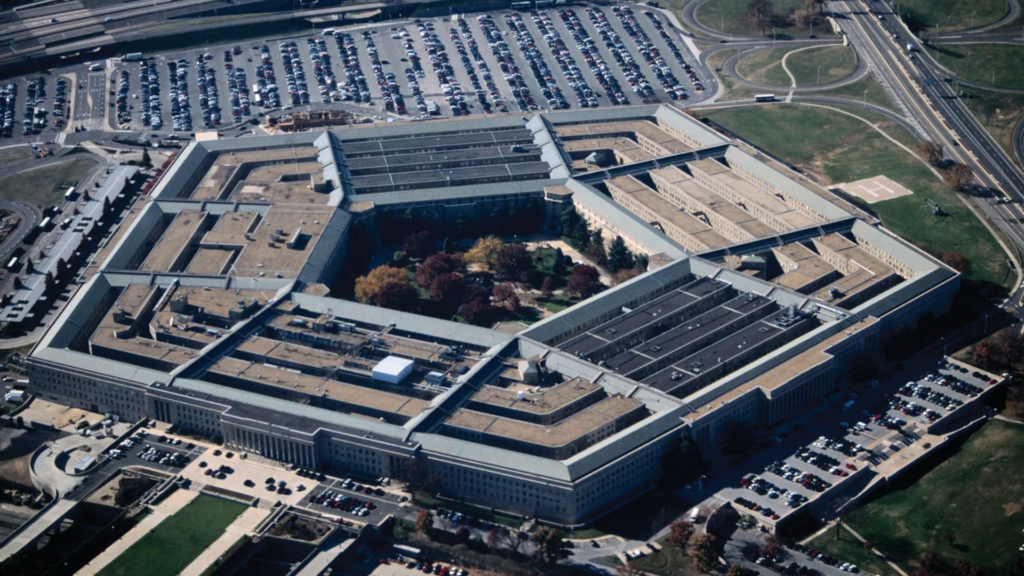
The Pentagon’s response to the increasing number of suspicious drones invading sensitive areas across the United States has drawn criticism, as questions about national security remain unanswered.
Recent sightings in multiple states, including New Jersey and Maryland, as well as near U.S. military bases, have sparked widespread concern and speculation about the origin of these devices.
With one drone crashing into New Jersey homeowner’s backyard as previously reported by Resist Times, causing controversies on social media between users.
In New Jersey, mysterious drones have been spotted flying over at least 12 counties in the past week, according to local reports. These incursions have prompted mayors to contact state officials, including the governor, to demand action and clarity.
The sightings have raised suspicions of foreign involvement, with some speculating that adversarial nations could be behind these operations. Representative Jeff Van Drew (R-NJ) stated on Wednesday that he received information from credible sources linking the activity to Iran.
“I learned from very high sources, from very qualified sources, that Iran launched a mothership a month ago that contains these drones,” Van Drew claimed. “It’s off the East Coast of the United States.”
Drone sightings are not limited to New Jersey. Former Maryland Governor Larry Hogan reported on Friday that he had witnessed drones over his residence in recent days. Similar activity has been reported near U.S. military bases, heightening fears that these devices could pose a significant threat to national security.
Despite the mounting evidence and growing public concern, the Department of Defense (DoD) has largely dismissed the issue. This dismissive attitude has left many Americans feeling frustrated, as they demand transparency and decisive action from federal authorities.
On Friday, the Pentagon added to the confusion by publishing a bizarre “test” message on its official website. The cryptic and unintelligible post quickly drew attention, sparking ridicule and speculation across social media.

The incomprehensible message, described by many as “utter gibberish,” led to a wave of online mockery. Social media users questioned whether it was a glitch, a failed attempt at humor, or evidence of deeper dysfunction within the agency.
The reaction on social media was swift and scathing. Users mocked the DoD’s apparent lack of seriousness in handling the drone crisis, with some humorously suggesting that President Joe Biden himself might be responsible for the incoherent post.
One user said, “Are they letting Joe Biden play with the computers again?” while another joked, “Sounds like a direct quote from Biden.”
Others speculated that the drones themselves had “hacked” the Pentagon’s systems.
“I think the drones just took over…” wrote one user. “Oh crap, the nuclear launch codes,” another added.
The post also inspired memes and humorous commentary, with some users sharing photos of fictional characters or public figures to mock the apparent lapse in professionalism.
The Pentagon’s failure to provide clear answers or address the origins of the drones has only deepened public anxiety. While National Security Council spokesman John Kirby has dismissed over 3,000 reports of “car-sized drones” as misidentified helicopters or airplanes, his statements contradict reports from military personnel and local authorities.
BREAKING🚨: John Kirby, the White House National Security Communications Advisor, admitted they lack sufficient information about the drones to decide whether or not to take action against them.
— Officer Lew (@officer_Lew) December 13, 2024
This administration is the most incompetent in history. pic.twitter.com/0TXaKx8zkr
Officials at New Jersey’s Picatinny Arsenal and Naval Weapons Station Earle have confirmed unauthorized drone breaches near their facilities, adding weight to concerns that the incidents are not merely innocent mistakes or hobbyist activities.
The possibility that a foreign adversary, such as Iran, could be responsible for these drone incursions has serious implications for U.S. national security. If confirmed, it would represent a significant escalation in unconventional tactics aimed at probing American defenses and undermining public confidence.
The Pentagon’s response—or lack thereof—has raised questions about the readiness and capability of U.S. authorities to handle emerging technological threats.
Critics argue that the agency’s dismissive tone and failure to engage with public concerns signal a worrying lack of urgency in addressing potential vulnerabilities.
As the drone sightings continue to multiply and speculation about their origins grows, the U.S. government faces mounting pressure to provide answers and take action.
Clear communication and a coordinated response will be essential to reassure the public and prevent further erosion of confidence in the nation’s ability to protect its airspace and critical infrastructure.
For now, the drones remain a mystery, and the Pentagon’s peculiar messaging only adds to the uncertainty surrounding this unfolding issue.
If foreign adversaries are indeed involved, the stakes are high. Addressing this challenge requires not only better transparency but also robust countermeasures to ensure the safety and security of the nation’s skies.

